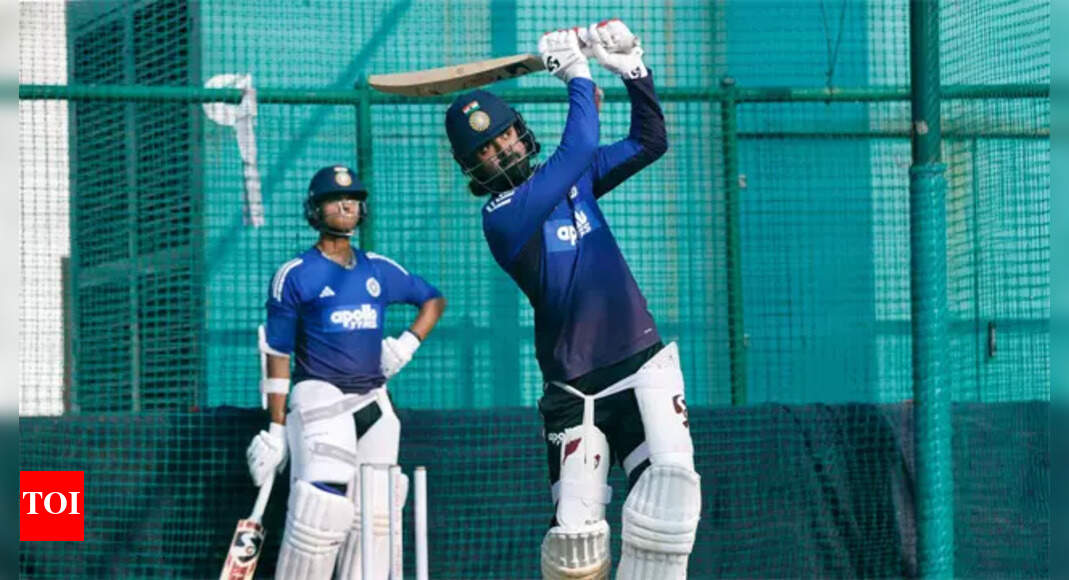Cricket latest
NEW DELHI: Can a lopsided Test series still create narratives compelling enough to retain dwindling spectator interest? Or will the relentless smash and grab for World Test Championship points further drain the soul and context out of an already endangered format?This is the big-picture scenario in play as the Ferzoeshah Kotla prepares to roll out Round Two of the India-West Indies non-rivalry here from Friday.
With Ahmedabad having served up a dull-as-dishwater exhibition of India’s unmatched superiority and Roston Chase’s men already giving out nervy vibes, expectations aren’t that high.
India players unwind at head coach Gautam Gambhir’s residence | Massive crowd greets them
Go Beyond The Boundary with our YouTube channel. SUBSCRIBE NOW!Any semblance of a contest here would entail heroic deeds of miraculous proportions from a dispirited and long-suffering Windies, who so far haven’t looked like they have any business sharing the Test stage with some more accomplished teams.
Or conversely, it could involve India playing well beneath their potential or experimenting wildly, none of which seems to be an eventuality given the WTC points at stake.So expect India to be ruthless and West Indies to be shaky, leaving the responsibility of springing surprises to the whimsies of the multi-day format and the slightly damp and cooler early October conditions here.The lack of any real excitement left one captain — Roston Chase — musing on his team’s lack of selfbelief and motivation on matcheve. That left his counterpart Shubman Gill to point out why Test cricket, now served on the altar of a quasi-league format sustained especially by such mismatches, should still matter.
“It’s the ICC’s decision whether (to split Test teams) into a two-tiered system but as a cricketing nation, if your red-ball base is strong, you automatically do well in ODIs and T20s,” Gill said. “If you look at any of the teams — England, Australia — if the Test teams are very good, it’s a natural thing that your ODI and T20 teams will do well.”The rankings seem to bear Gill out, with West Indies No. 8 in Tests to India’s No.
4 and No. 9 in the 50-over format (India top the table). “I don’t know,” Gill said when asked to explain West Indies’ era-spanning downward spiral, before offering, “Maybe their (West Indies) players’ focus is more on T20 and leagues. So if your focus is on that, then the base from where the game has started, when you forget that, then the struggle of any country starts from there.
”Chase, who is all too aware that the team has slipped in T20Is as well (they are No.
6 to India’s No.1), said the dip in self-belief may have a lot to do with the dearth of quality first-class cricket. “Red-ball cricket is the foundation. If you can play the longer format well, it’s easier to adapt to ODIs and T20s but the reverse is tough. A strong base in redball cricket teaches you discipline, technique and temperament.“It comes down to confidence and playing enough quality first-class cricket. The more time you spend facing good bowling attacks, the more you learn to handle pressure and improve on your weaknesses.
When you start your career, opponents don’t know much about you but after a few matches they pick on your flaws. It’s up to the players to identify those areas early,” Chase said.Only one thing is sure — improvements can’t happen in the heat and dust of a subcontinental Test arena. With the bat, the West Indies lasted 44.1 overs in the first innings in Ahmedabad and 45.1 in the second, so showing spine and playing out some overs will be their first priority.Already without their best pacers, the inclusion of the left-arm pace of Jediah Blades is unlikely to rattle India, who go in with questions over the form of Sai Sudharsan and the role Nitish Kumar Reddy is expected to play. The side is spin heavy, bats deep and given the cooler conditions, the Kotla may not crack up quickly enough, meaning the pacers might be in play early on too. Winning any Test isn’t easy but India seem up to the task.

